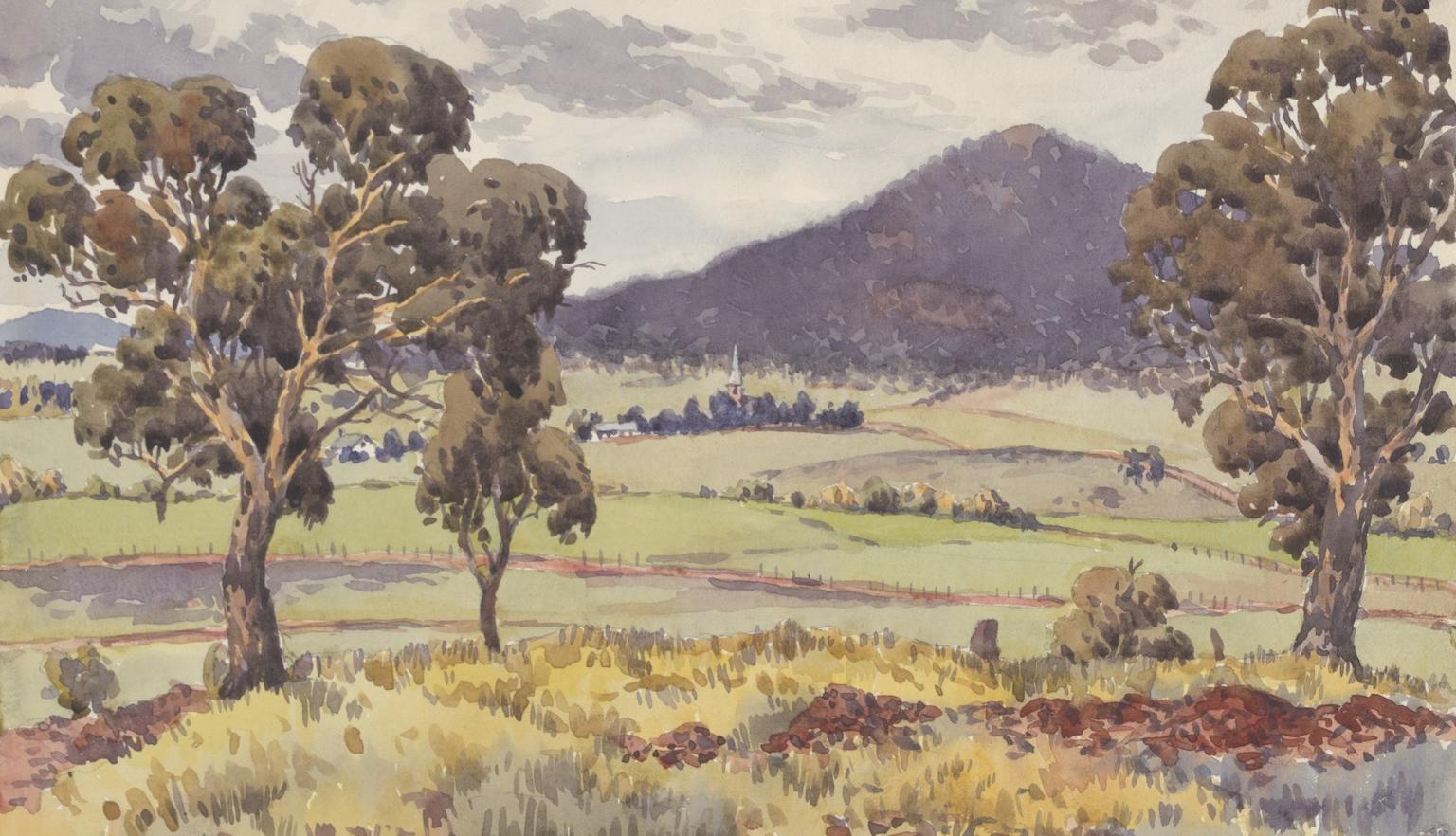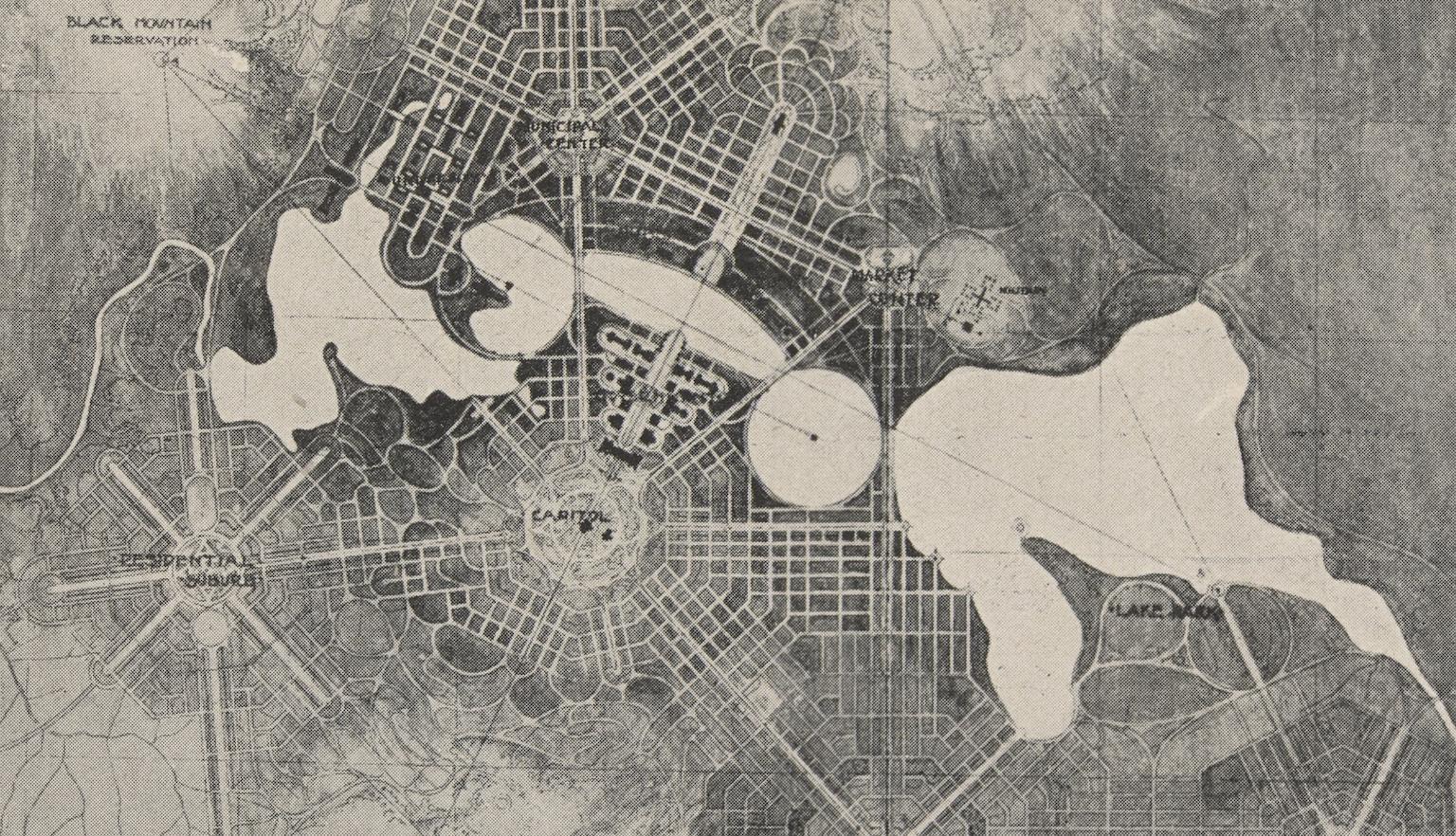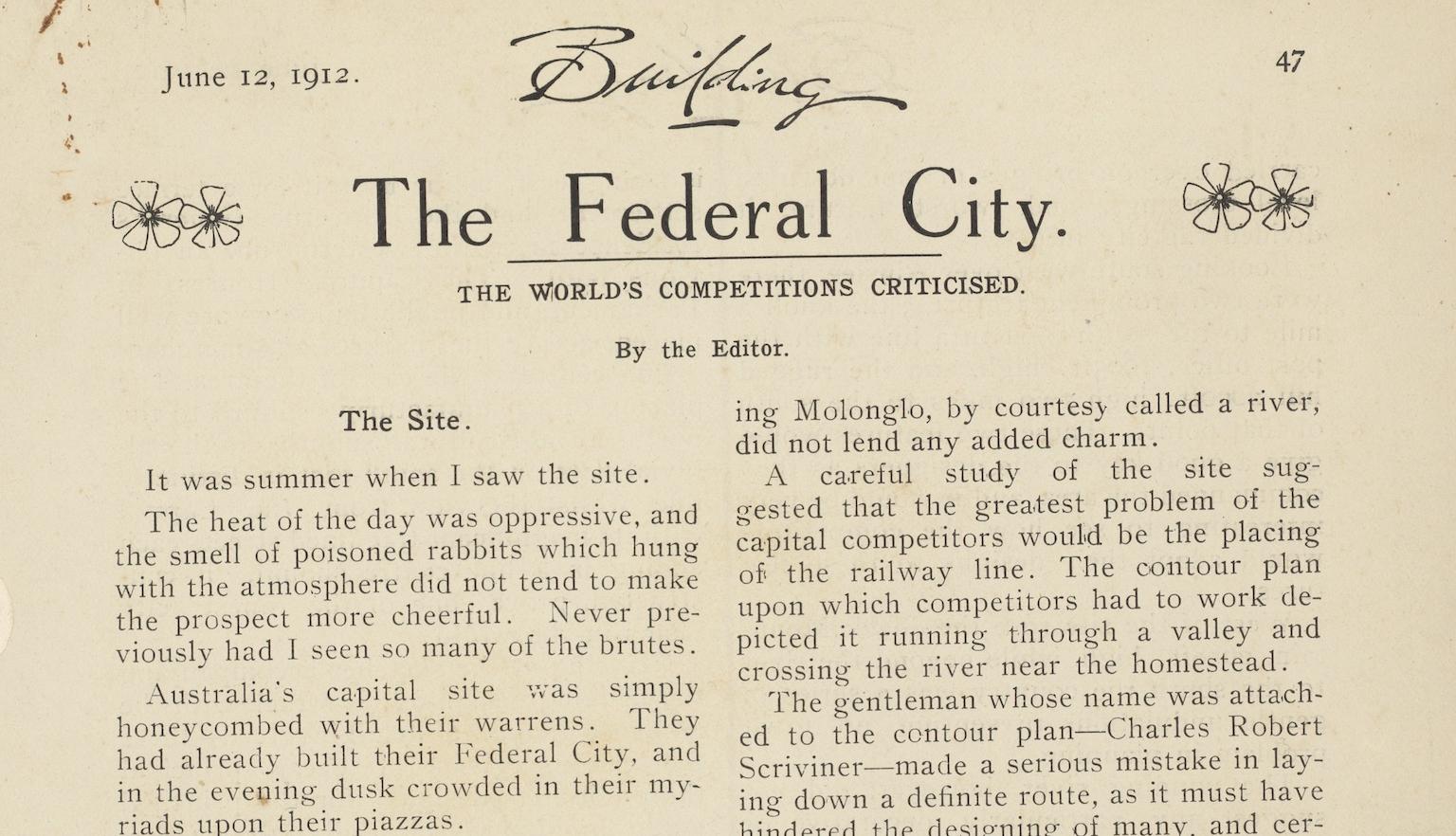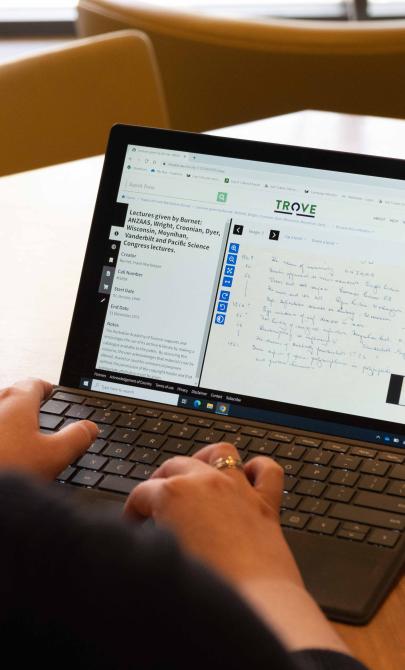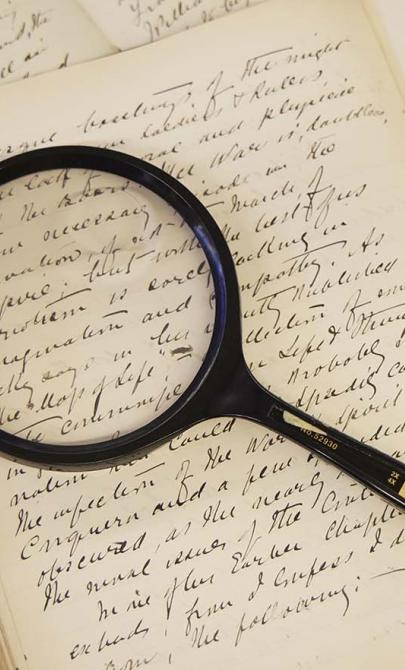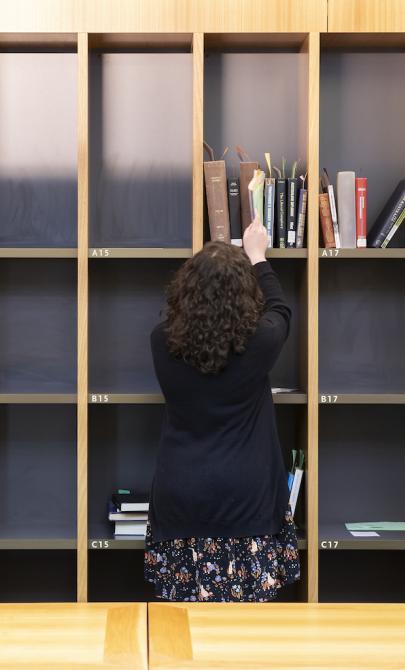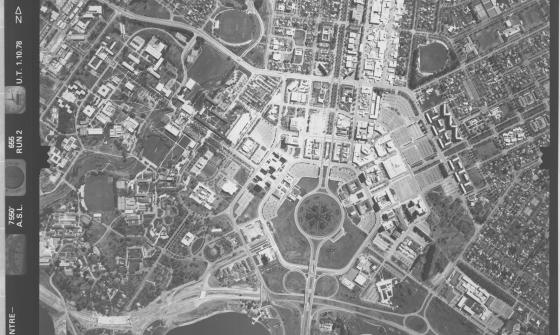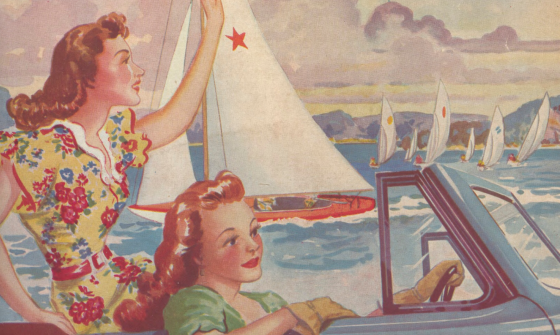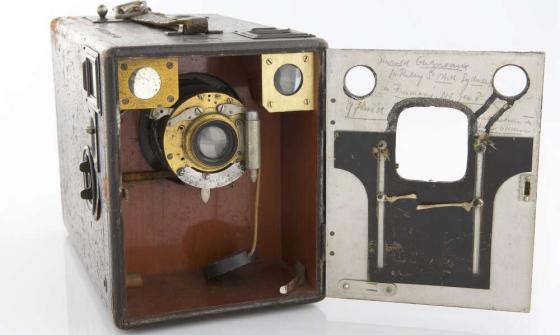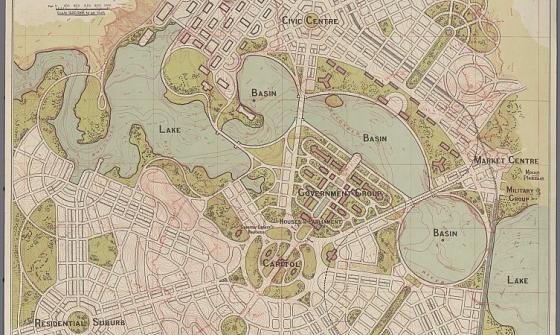Griffin and early Canberra Collection
Collection highlights
Key items in the collection
This collection hosts a range of formats, including:
The Library holds a comprehensive collection of printed and manuscript maps of Canberra and the Australian Capital Territory.
Before the international design competition for the National Capital, several Royal Commissions investigated potential sites for the Commonwealth’s Seat of Government. The Library holds sketch maps of proposed Federal Territory and capital sites published between 1900 and 1909.
In December 1908, Parliament approved the Yass–Canberra district as the capital site. In May 1909, engineer Charles H. Caswell used parish maps of Canberra and Narrabundah to design a sewerage scheme for the Molonglo River area. His original plan is held in the Library. Based on Caswell’s work, surveyor Charles Scrivener prepared a contour survey of the site, published later that year by the New South Wales Department of Lands. This survey formed the basis for the capital’s design competition. The Library also holds a tracing by Scrivener showing the location of the Federal Members’ camp in Canberra.
The Department of Home Affairs created photographic copies of the 1911–12 design competition entries, which are part of the Library’s collection. It also holds the base maps and supporting information provided to competitors. A lithograph of Walter Burley Griffin’s winning design was published in 1913 by the New South Wales Department of Lands. The Library holds several of Griffin’s modified designs from the following five years, including a plan for an industrial suburb.
The Eric Nicholls Collection includes 14 base maps of Canberra, hand-coloured to show land and water axes, and changes to roads, railways, water supply and sewerage. Some maps are annotated with the initials of King O’Malley or Griffin. The Library also holds a 1916 manuscript map of Canberra by J.T.H. Goodwin, chief surveyor in the Department of Home Affairs.
Later maps were produced by the Federal Capital Advisory Committee (1921–24) and the Federal Capital Commission (1924–30). These show roads, residential areas, plantations, reserves, water supply and other infrastructure. The collection also includes auctioneers’ sale plans for Canberra and Jervis Bay.
Other plans by Griffin in the collection include designs for Leeton, Griffith, Eaglemont (Melbourne), Castlecrag (Sydney), and a proposed city at North Arm Cove, Port Stephens.
- Marion Mahony Griffin , ‘The Magic of America’ (New York Historical Society)
- Walter Burley Griffin, Architectural drawings (Burnham Library of Architecture)
- Walter Burley Griffin, Architectural plans and drawings of Castlecrag houses (Willoughby Municipal Council)
- Suzanne Lunney, Interview with Edgar Deans about the Greater Sydney Development Association and the Griffins, 1975
- Steven Guth, Interview with Ron Evans about Walter Burley Griffin and Marion Mahony Griffin, 1989
- Steven Guth, Interview with Mervyn Griffiths about Castlecrag and the Griffins, 1992
Portraits and Drawings
The Library holds a charcoal drawing of Walter Burley Griffin by Constance Paul. This sketch was a study for an oil painting entered in the 1936 Archibald Prize and later owned by Marion Griffin.
The Eric Nicholls Collection
This collection includes around 160 original architectural drawings in pencil, ink and wash by Walter Burley Griffin and Marion Mahony Griffin. The works span from student projects in the 1890s—mostly houses in Illinois and Iowa—to designs for Lucknow University created in the final years of Walter’s life.
Highlights include lithographs and watercolours on silk, depicting:
- Griffin’s home at Winnetka (1911)
- The Canberra water axis (1911)
- Trier Center neighbourhood, Winnetka (1913)
- Views from Mount Ainslie (1911–12)
- Newman College, Melbourne (c. 1915)
- Capitol Theatre, Melbourne (c. 1921)
- Castlecrag residences (1921–22)
- NSW Government Savings Bank (1927)
The Library also holds photographs, slides and transparencies of paintings and drawings by the Griffins, including their submissions to the Canberra design competition.
Paintings and Drawings of Canberra (1900–1930)
Among the works held in the Library are:
- Penleigh Boyd, The Canberra site, watercolour, 1913
- Charles Coulter, Canberra, 1912, oil painting
- Charles Coulter, The ford, Molonglo River, watercolour, 1909
- Charles Coulter, View looking south over site from Mount Ainslie, wash drawing, 1908
- Herbert R. Gallop, Canberra, Feb. 1924, oil painting
- Herbert R. Gallop, Site of Canberra from the foot of Mount Ainslie, oil, 1927
- William Elliot Johnson, St John the Baptist Church, Canberra, pencil, 1909
- William Lister Lister, Canberra, 1912, oil painting
- William Lister Lister, The Federal Capital site, Canberra, Australia, 1913, watercolour
- Robert Hay Robertson, Canberra: Mount Ainslie from site of capitol, watercolour, 1910
- Robert Hay Robertson, Post Office, Ainslie, looking south, watercolour, 1910
- HM Rolland, Views of Canberra, several watercolours, 1913-25
- Joseph Wolinski, Ainslie Post Office, oil, 1912
Eirene Mort’s Canberra Album
A notable item in the collection is an album of 84 drawings and watercolours by Eirene Mort, created between 1916 and 1939. These works depict old Canberra and its surroundings, including:
- St John’s Church
- Canberra schoolhouse
- Canberra post office
- Duntroon
- Klensendorlffe’s farm
- Acton homestead
- Gininderra and Gungahlin homesteads
- Black Mountain
- Coppins Crossing
- Mount Pleasant
- Cotter Dam
- Mount Tennant
Although no single comprehensive archive of Walter Burley Griffin exists, the Library holds original documents, letters and copies of writings by both Walter and Marion Mahony Griffin across several collections.
The papers of King O’Malley, Minister for Home Affairs in 1910-13 and 1915-16, contain extensive official papers relating to his portfolio. There are files on the Federal Capital and a number of letters from Griffin to O’Malley.
Papers of the public servant CS Daley
The papers of the public servant C.S. Daley are an extraordinary source on the development of Canberra and its social and cultural life from 1913 to 1966. The early papers document aspects of the work of the Department of Home Affairs, the Federal Capital Advisory Committee, and the Federal Capital Commission.
The small collection of papers of Edgar Deans, the secretary of the Greater Sydney Development Association, consist of plans, photographs and documents on Castlecrag and an essay on the Griffins by Louise Lightfoot.
The papers of Donald L. Johnson were assembled when he was writing his book The architecture of Walter Burley Griffin (1977). They cover Griffin’s entire life and consist of photocopies of correspondence, official papers and articles, publications, notes, photographs, slides, tracings of plans and drawings, bibliographies and microfilms. There are also copies of different versions of Marion Griffin’s ‘The Magic of America.’ The collection occupies 28 boxes.
Papers of the town planner Peter Harrison
The papers of the town planner Peter Harrison include drafts of his thesis Walter Burley Griffin: landscape architect (published posthumously), an extensive correspondence, research notes, official publications, copies of theses by other writers, and various sources on Griffin’s life and work.
Papers of the designer Rowland Herbert
The small group of papers of the designer Rowland Herbert contain letters, cuttings and photographs about Griffin and Castlecrag.
The papers of Eric Nicholls, who was Griffin’s partner, contain a number of typescript articles by Griffin, mainly dating from the period 1925-36. There are also letters about a partnership in 1914, copies of exercises prepared by Griffin when he was a student, notes by Griffin on Frank Lloyd Wright, newspaper and magazine articles about the Griffins, and files on various architectural projects. The collection occupies 14 boxes.
The Eric Nicholls Collection
The Nicholls Collection includes photographs of Walter Burley Griffin and Marion Mahony Griffin during their time in Australia, along with a large number of architectural and landscape photographs. Subjects include:
- Houses in the United States and Melbourne
- Incinerators
- Newman College
- Café Australia
- Capitol Theatre
- Chinese Club, Melbourne
- Castlecrag
- Leeton
- Studies of Australian trees
Canberra and ACT Photography
The Library holds an extensive photographic collection documenting Canberra and the Australian Capital Territory from the late 19th century to the present.
The most significant documentation of Canberra’s transformation from village to capital is the set of 540 lantern slides by public servant William J Mildenhall. His subjects include:
- Civic shops
- Institute of Anatomy
- Cottages and Telopea Park School
- Government House and Canberra House
- Duntroon
- Construction of Parliament House
- Government offices and Hotel Canberra
- Yarralumla Nursery
- Opening of Parliament House (1927)
- Molonglo internment camp
- Capitol Theatre
- St John’s Church
- Kingston power station
Photographic prints are held in Album 827.
Among the other collections dating from the first three decades of the twentieth century are the following:
- Album of photographs of the Federal Capital site, Album 300
- Album presented to F.C. Grover by members of the excursion to the Yass-Canberra capital site, 1908, Album 320a
- Frank H Boland, Album of 59 photographs of Canberra scenes, Album 1010
- Eric K Bowden, Eric Kendall Bowden photograph collection of Canberra scenes, Album 965
- Gustav Daly, Album of photographs of Canberra, including Duntroon, Canberra buildings and Cotter Dam, 1921-22, Album 304
- Ruth Lane-Poole, Furniture designs for Prime Minister's Lodge and Government House, Canberra, 1926
- May Sibley, Photographs of the opening of Parliament House, 1927
- Charles H Taylor, Photographs of Parliament House, Hotel Canberra and other buildings, 1926-27
- TGC Weston, Two photograph albums, 1925-29. Album 319.
- James Birrell, Walter Burley Griffin, 1964
- Nicholas Brown, A history of Canberra, 2014
- Jim Gibbney, Canberra 1913-1953, 1988
- Dustin Griffin (ed.), The writings of Walter Burley Griffin, 2008
- Peter Harrison, Walter Burley Griffin, landscape architect, edited by Robert Freestone, 1995
- Donald L Johnson, The architecture of Walter Burley Griffin, 1977
- Donald L Johnson, Canberra and Walter Burley Griffin: a bibliography of 1876 to 1976 and a guide to published sources, 1980
- Paul Kruty, Walter Burley Griffin in America, c. 1996
- Paul Kruty and Paul E Sprague, Two American architects in India: Walter B. Griffin and Marion M. Griffin 1935-1937, 1997
- Alasdair McGregor, Grand obsessions: the life and work of Walter Burley Griffin and Marion Mahony Griffin, 2009
- GA Mawer, Canberry tales: an informal history, 2012
- Roger Pegrum, The bush capital: how Australia chose Canberra as its federal city, 2008
- Mark L Peisch, The Chicago school of architecture: early followers of Sullivan and Wright, 1964
- Paul Reid, Canberra following Griffin: a design history of Australia’s national capital, 2002
- Frederick W Robinson, Canberra’s first hundred years and after, 1927
- Wanda Spathopouolos, The Crag: Castlecrag, 1924-1938, 2007
- Jeff Turnbull and Peter Navaretti (eds.), The Griffins in Australia and India: the complete works and projects of Walter Burley Griffin and Marion Mahony Griffin, 1998
- Anne Watson (ed.), Beyond architecture: Marion Mahony and Walter Burley Griffin: America, Australia, India, 1998
- Deborah Wood (ed.), Marion Mahony Griffin: drawing the form of nature, c. 2005
About Walter Burley Griffin and Marion Mahony Griffin
Walter Burley Griffin (1876–1937) was born in Maywood, near Chicago. He studied at Oak Park High School and graduated in architecture from the University of Illinois in 1899. In 1901, he became an associate of Frank Lloyd Wright and started his own practice in 1906. By 1910, he was recognised as a leading figure in the Prairie School of architecture.
In 1911, he married Marion Lucy Mahony (1871–1961), an accomplished architect who had also worked with Wright.
Designing Canberra
In 1912, Griffin won the international competition to design Australia’s Federal capital, with the help of drawings prepared by Marion. The design sparked ongoing controversy and debate.
In 1913, he was appointed Federal Capital Director of Design and Construction—a part-time role he held until 1920, while based in Melbourne. Although his extensive lakes scheme was rejected, the main axial lines of the city were surveyed by 1917, and his final plan was completed in 1918. However, little construction occurred on site until the 1920s, apart from tree planting.
Work Across Australia
During this period, Griffin designed town plans for Leeton and Griffith in New South Wales, and residential estates in Eaglemont, Melbourne. He also designed several notable Melbourne buildings:
- Café Australia
- Newman College Chapel
- Capitol Theatre
In 1920, he founded the Greater Sydney Development Association to develop residential estates on the headlands of Middle Harbour. Castlecrag was begun in 1921, and the Griffins moved there in 1924. However, only a small number of houses were completed. After 1929, their partnership with Eric Nicholls focused on designing municipal incinerators.
In 1935, the Griffins moved to Lucknow, India. After Walter’s death in 1937, Marion returned to Chicago.
Carrying Out the Vision for Canberra
From 1920, responsibility for Canberra’s design and construction shifted to government departments, particularly the Department of Home and Territories and the Department of Works and Railways.
The Federal Capital Advisory Committee, chaired by Sir John Sulman, recommended that Canberra begin as a “garden town, with simple, pleasant but unpretentious buildings,” to be replaced later by more permanent structures.
In 1923, after hearing evidence from Griffin, the government selected the site for the Provisional Parliament House, and construction began. The first sale of residential land leases followed in 1924.
In 1924, the Federal Capital Commission was established, led by John Butters with C.S. Daley as secretary. Under its direction:
- Two main office buildings, the Prime Minister’s Lodge, Albert Hall, and the Acton and Kurrajong Hotels were built
- Yarralumla House and Mount Stromlo Observatory were extended
- Workers’ cottages and camps were established
Background to the collection
With the support of architectural historian Donald Leslie Johnson, the National Library began actively collecting original records related to Walter Burley Griffin from 1969 onwards. Many individuals and local government authorities contributed by donating or lending drawings, plans and specifications for copying.
An early approach was made to Eric Nicholls, Griffin’s professional partner from 1920 to 1937. However, it wasn’t until 2006 that the Library was able to acquire the substantial Nicholls Archive from his family. This important collection includes many original plans, drawings and papers by both Walter Burley Griffin and Marion Mahony Griffin.
Key Acquisitions
- The earliest major acquisition was the King O’Malley papers, received from the Public Trustee of Victoria in 1956. These include extensive material on Griffin’s work.
- The C.S. Daley papers and maps were donated by his son in 1967.
- The Donald Leslie Johnson Collection was purchased in 1989.
- The Peter Harrison papers were donated by his wife, Sheila Harrison, in 1991.
Artworks
- A painting of Ainslie Post Office by Joseph Wolinski was purchased in 1938.
- An oil painting of Canberra by W. Lister Lister was donated by John S. Dence of Sydney in 1952.
- Nine watercolours of Canberra by H.M. Rolland were acquired in 1953, with an additional painting donated by Rolland in 1962.
- Two paintings of Canberra by Herbert R. Gallop were donated by his wife in 1960 and 1971.
The Eric Nicholls Collection has been divided between the Pictures, Maps and Manuscripts collection.
Held in the Pictures Collection, having been catalogued individually and digitised, are the following:
- watercolours
- drawings
- lithographs
- blueprints
- photographs
- slides
- transparencies.
The 21 city and suburban plans are individually catalogued and digitised in the Maps Collection.
Housed in the Manuscripts collection(MS 9947) are the:
- letters
- typescripts
- articles
- publications.
At this stage, they have only been roughly arranged. Use the finding aid.
The other collections of personal papers are held in the Manuscripts collection. Use the 16-page guide.
There is also a card index to the correspondence in the Manuscripts collection. Online finding-aids are available for the papers of Donald L Johnson, CS Daley and Peter Harrison.
The other maps and plans of Canberra are housed in the Maps Collection.
The paintings, drawings and photographs of early Canberra are in at various locations the Pictures Collection. They have been catalogued individually and most of them have been digitised.
The oral histories are catalogued individually in the Oral History and Folklore Collection.
The microforms are held in the Newspaper and Microform Collection, with the exception of the Willoughby City Council collection, which is in the Pictures Collection.
The publications are held in the Australian collection.
This guide was prepared using these references:
- Fitzgerald, Alan, More light is shed on Burley Griffin, Canberra Times, 25 July 1992, p. C5
- Harrison, Peter, Griffin, Walter Burley (1876-1937), Australian Dictionary of Biography online
- Vernon, Christopher, The Eric Nicholls Collection, National Library of Australia News, vol. 17 (8), May 2007, pp. 7-10
- Vernon, Christopher, Visions splendid, National Library of Australia News, vol. 13 (7), April 2003, pp. 7-10
